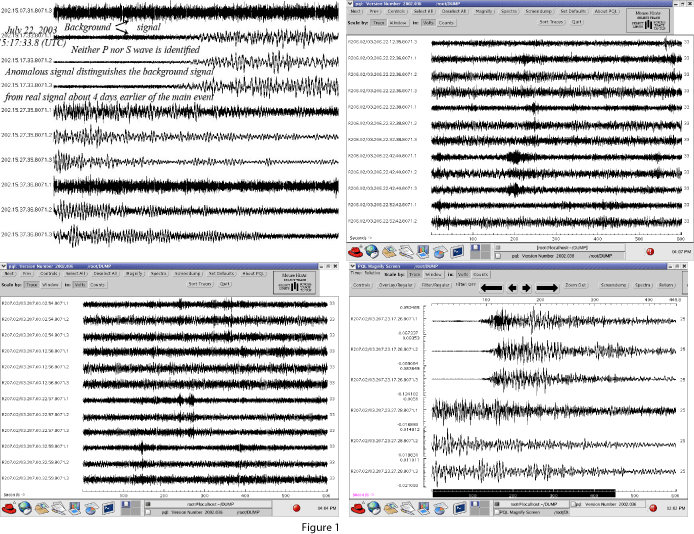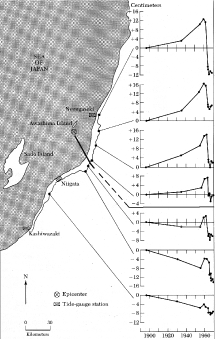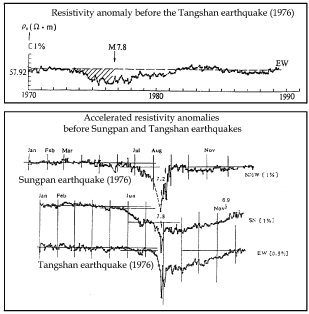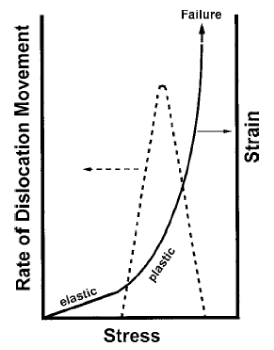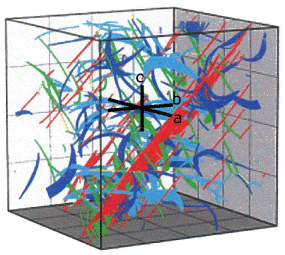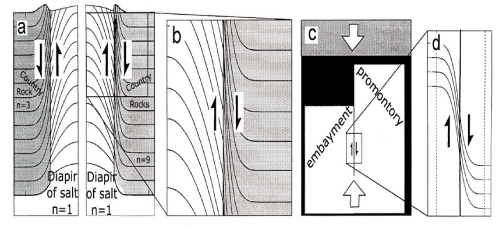
Review Article
Austin J Earth Sci. 2014;1(1): 6.
Does an Anomalous Wave-form Signal can occur without Seismic Phase and Signifies Precursor of an Earthquake?
Khan AA*
Department of Geology, University of Malaya, Malaysia
*Corresponding author: :Khan AA, Department of Geology, University of Malaya, Jalan Universiti, 50603 Kuala Lumpur, Malaysia
Received: March 03, 2014; Accepted: Aug 04, 2014; Published: Aug 06, 2014
Abstract
Seismic waves precipitate in an earthquake is generated due to ‘physical jolt’/ ‘fault rupture ‘and propagate in an elastic-plastic domain through the earth crust. Seismic waves, thus generated, contain all the seismic phase viz., P-, S-, and Surface wave; and are recorded in broad-band seismographs. The seismic records/seismograms are used to determine location, magnitude and focal depth of an earthquake; and, focal mechanism solution of fault rupture. In contrast, when seismic wave does not contain seismic phase, they are referred to as noise or signal due to nuclear explosion. However, several anomalous signals without seismic phase have been observed before an earthquake those are distinctly different from noise and signal due to nuclear explosion. In this paper an occurrence of such anomalous signals prior to an earthquake are analyzed and correlated with the non-seismic signals and led to propose such anomalous signal a “pseudo seismic signal”. Further, such signals are suggested to occur due to micro-fracturing and its motion is linked to lattice dislocation movement process which can move earlier than brittle failure /fault rupture. Since lattice dislocation movement due to micro-fracturing is faster than the brittle failure that can move earlier than seismic wave. Large dislocation avalanche occur along a preferred slip plane. The dislocation movement of the micro-fracturing with no-slip boundary may emerge as an avenue for the movement of the pseudo seismic wave, a precursory signal of an earthquake.
Keywords: Anomalous signal; Micro-fracturing; Pseudo-seismic wave; Dislocation avalanche; Earthquake precursor
Introduction
A variety of prediction methods have been used for centuries ranging from typical earthquake to observations of the arrangements of the planetary bodies and odd behavior of animals. The efforts include foreshock, anomalous seismic activity, seismic gap, b-value, source mechanism, hypo central migration of micro seismicity, changes in the ratio of seismic velocities, anomalous geomagnetic & geoelectric signals, and anomalous geochemical signals. Most have been unsuccessful due to its non-compliance with near real time attributes. No mechanism has yet been evolved for earthquake forecasting or alarm. However, the successful predictions have failed to provide any empirical relation applied to any precursory signals. Systematic efforts are being made to detect earthquake precursors since 1960s. Non-seismic signal such as geomagnetic signal, geoelectric signal, geochemical signal, electromagnetic signal, radon emission etc., are being tried as the precursors of an earthquake without much success. On the other hand, seismic signal generated by some ‘physical jolts’ like fault rupture are normally referred to as elastic wave or seismic wave. Non-seismic signals are also generated during the preparation phase of an earthquake. Some anomalous signals have been observed in the seismic records those are not typical non-seismic signal neither a seismic signal since they do not contain any seismic phase. A new acronym “Pseudo seismic” has been suggested for this anomalous signal. In this paper, an effort is given to correlate such signal with some theoretical bases and to understand the genesis of pseudo seismic signal. The paper deals with the problem pertaining to an earthquake that has occurred on July 27, 2003 in the Eastern Fold Belt of the Bengal Basin with a moment magnitude (Mw) 5.6 and focal depth 11 km (Figure 1). Seismogram of this earthquake revealed that five days prior to the main earthquake some anomalous signals were recorded those do not characterize signals due to an earthquake. Neither, there was any earthquake at the time of occurrence of the anomalous signal within thousand kilometers radius.
Anomalous signals have been recorded 4 days and 1 day prior to the main event.
The main earthquake event of July 26, 2003 occurred at 23: 17: 26.8 hrs with magnitude Mw = 5.6 located at 22.8ON 92.4OE.
Figure 1:Anomalous signals have been recorded 4 days and 1 day prior to the main event.
The main earthquake event of July 26, 2003 occurred at 23: 17: 26.8 hrs with magnitude Mw = 5.6 located at 22.8ON 92.4OE.
Prediction Constraints
The prediction of an earthquake, felt or destructive, can easily be made in space. The problem lies whether a particular earthquake in space will recur in the same place in predictable time or not. One example of earthquake precursor comes from geodetic measurements of ground elevation in the west coast of Honshu, Japan. A steady rate of uplift and subsidence for 60 years slowed down at end of 1950’s and prior to 1964, Niigata earthquake a sudden subsidence of more than 20 cm was detected near Niigata (Figure 2) [1]. On February 4, 1975 an urgent warning was issued for the cities and towns around Haicheng and Yingkow, China that a strong earthquake would probably occur within next 24 hours. At 7:36 P.M. a strong earthquake of magnitude 7.3 shook the region. This forecast has saved about 3,000,000 people from being buried under 90 percent collapsed buildings. However, no scientific basis and evidences were given [2]. The dominant frequency range of electromagnetic precursory signal from northwest of Athens prior to an earthquake of 3 May 2004, magnitude 4.3 shows 6 Hz to 26 Hz. The seismic frequency attribute of an area in Tibet also shows dominant frequency range between 8 Hz to 28 Hz where earthquakes occur very frequently [3]. Local magnetic field anomalies and low frequency electromagnetic (EM) emissions have been documented beyond reasonable doubt prior to a number of well-studied earthquakes where the attention of many researchers in pre-earthquake phenomena has indeed focused on the generation of electric currents in the Earth’s crust. The association between a precursory geomagnetic anomaly and a Vrancea (Romania) earthquake of moderate-to-high magnitude (Mw=6.3) followed by weaker earthquakes (Mw<5) has been proved, although neither the precursor time and nor the amplitude of the precursory magnetic anomaly has been linked reliably with the magnitude of the anticipated earthquake. The earthquake-precursor increase in geomagnetic impedance might correspond to an earthquake-precursory decrease in geoelectric resistivity [4] (Figure 3).
Figure 2: Vertical movements of bench marks along the west coast of Japan near the June 1964 Niigata earthquake, magnitude 7.5. Changes in level (in centimeters) before and after the earthquake are shown on the right. (Adopted from Bolt, 1978).
Figure 3: The earthquake-precursor increase in geomagnetic impedance correspond to an earthquake-precursory decrease in geoelectric resistivity evidence from Tangshan and Sungpan earthquakes.
Precursory seismic signals have been reported from Iran wherein it is claimed that the precursory signals distinguishes the background noise from real fluctuations before an earthquake that treats them as a Markov process. The Markov time scale increases sharply before an earthquake. Considering the concept of self-similarity of data for computing second time quantity and Markov time, it has been claimed an essentially zero rate of failure in predicting a short-term alert for earthquakes [5,6]. Seismic Alert System (SAS) issued an alert signal to the public with a 72 sec advantage in Mexico City of September 14, 1995 Copala earthquake of magnitude 7.3 (Figure 4). This alert signal has failed to provide any scientific basis. Some distinctive anomalous seismic signals substantially different from background noise prior to earthquakes have been observed in the broadband seismographic recorder installed in the geology building of Dhaka University, Bangladesh (Figure1). The recording site is characterized by dominant frequency 0.8 Hz. Several hours to several days prior to an earthquake the nature of the signal changes distinctly. However, the quantitative characterization of these anomalous seismic signals has not yet been done. Discovery of electric charge carriers of defect electrons in the valence band (positive holes) through the earth crust is remarkable one [7]. The physical and chemical nature of positive holes, its genesis and current propagation through rocks leading to electromagnetic emission, to positive surface potentials to corona discharges, to positive ion emission, and to mid-infrared radiation have been explained very candidly. One basic process on the atomic scale has been attributed between the elastic response and the onset of micro cracking and cracking, generation and movement of dislocations. Here, the critical point needs to understand about the processes responsible for leaking and channeling of stress energy into non-seismic processes at the atomic level prior to catastrophic failure.
Figure 4: Alert signal with a 72 sec advantage in Mexico City of September 14, 1995 Copala earthquake.
Results and Discussion
Seismic wave is an elastic wave that moves in combination of sonic (sound) motion and particle motion. Four major types of seismic waves are P-, S-, Rayleigh and Love waves wherein P- and S-waves are the body wave and Rayleigh and Love waves are the surface wave. All the four elastic waves have distinct sonic and particle motions character. These waves are generated when sudden release of the accumulated energy in the geologic materials can occur in the form of cracking and/or fault ruptures at depths. These seismic waves exhibit distinct P-,S- and Surface-wave phases in the seismogram. The recorded seismic signals are quite distinct from the background signal and/or noise. However, when waveforms, recorded and displayed in the seismogram, do not show any phase neither it resemblances typical noise, it becomes a confusing about the signals. It is observed that such signals are recorded days before an earthquake event. In addition to the anomalous signal recorded before the earthquake of July 27, 2003 in the eastern folded belt of the Bengal Basin (Figure1), another earthquake occurred on September 21, 2003 before which an anomalous signal was recorded on September 12, 2003 (Figure 5). It becomes more puzzling when anomalous signals are observed one day before the main shock.
Figure 5: Anomalous signal recorded on September 12, 2003 before an earthquake occurred on September 21, 2003.
Ductile shear zones with different styles are related to rocks having deformed as pseudo plastic power law fluids [8] with different exponent ‘n’ (n >1) of the stress sensitivity of the strain rate while its reciprocal, 1/n, is the strain rate sensitivity of the flow stress [9]. Displacement gradients in natural shear zones show good matches with the steady flows of pseudo plastic fluids along no-slip boundaries in a variety of rock types of different age, environment and scale [8]. Under stress, many crystalline materials exhibit irreversible plastic deformation caused by the motion of lattice dislocations [10]. One basic process on the atomic scale nestled between the elastic response and the onset of micro-cracking and cracking vis-à-vis generation and movement of dislocations has been identified [7]. The generation of dislocations in plastic phase attains much earlier than the failure in the brittle phase (Figure 6). It is inferred that during the dislocation movement in the plastic phase pseudo seismic wave is generated in ductile shear zone prior to brittle rupture and flows through pseudo plastic fluids along no-slip boundaries. The formation of narrow slip line or slip band on microscopic scale during the initiation of micro cracking should lead to the formation of ductile shear zone of no-slip line or no-slip band on macroscopic scale. The mechanism of the formation of such ductile shear zones of no-slip boundaries prior to brittle rupture can generate pseudo-seismic wave that propagates intermittently. The dotted curve (Figure 6) traces schematically the rate of generation of dislocations dn/dt, where ‘n’ is the number of dislocations and ‘dt’ a time interval. Dislocations are linear defects in crystals where the lattice on one side is slightly off-set with respect to the lattice on the other side. Dislocations typically move by a process in which one atom or ion at a time jumps a short distance from one side to the other side. This ‘‘zipper-like’’ motion allows dislocations to move without the need to overcome very high activation energy barriers [11] (Figure7). It is further envisaged that the generation of dislocations on the atomic scale in the plastic phase attains much earlier than the failure in the brittle phase thus become conducive to generation of pseudo-seismic signals due to pseudo-plastic flow. Pseudo-seismic propagation ahead of seismic propagation is evident wherein the dislocation movement is earlier than the brittle failure. I propose a mechanism that combines critical earthquake concept and the concept of crust acting as the ductile shear zone of pseudo seismic avalanches.
Figure 6: Generation of dislocations in plastic phase attains much earlier than the failure in the brittle phase.
Figure 7: Progress of a large dislocation avalanche in [010] symmetrical multiple slip. Several geometrically separated dislocations become unpinned during the same event, which demonstrates the importance of long-range elastic interactions in strain burst initiation. The avalanche has a strongly anisotropic shape with more than 60% of the deformation occurring on one of the four equivalent sets of slip planes.
Seismic waves are used to determine the location, size, depth and the nature of fault rupture of an earthquake. But, until now seismic waves have not been looked as an earthquake precursory signal. However, several non-seismic signals viz., geomagnetic, geoelectric, and geochemical signals are being used as precursory signals without one to one correlation. Independent of scales, ductile shear zones lei in a geometric spectrum with wide zones of gentle shear inconspicuous along the limbs of flow folds at one end and, at the other end, zones of intense shear so narrow that they resemble faults [7]. However, non-seismic signals are generated during preparation phase of an earthquake whether or not that would cause any potential fault / brittle rupture and movements [7,8,12-14]. It is probable that alike seismic and non-seismic signals, pseudo seismic signals do occur in nature prior to brittle rupture generating an earthquake. Seismic wave is the combination of compression and rarefaction that makes advancing wave front. Distinct difference between body wave (longitudinal & transverse) and surface wave (Rayleigh & Love), while, a pseudo seismic wave does not contain such distinguishing features like seismic wave. The genesis of an earthquake is intrinsically related to the geodynamic processes operating in the plate collision zones and the orogenic belts. The geodynamic process is responsible for leaking and channeling stress energy from source (focus) that may propagates as non-seismic, pseudo seismic and seismic waves. It is observed that non-seismic and pseudo seismic waves arrive at the surface much earlier than a seismic wave generated by rupturing at the focus. However, pseudo seismic wave may generate when the source of pseudo plastic power law fluids occur at very shallow depths ranging between 10-15 km because the crust behaves rigid with frictional regime up to 10 km depth and frictional-viscous creep regime up to 15 km depth. Below 15 km depth, the crust behaves more ductile with only viscous creep regime [15,16], except where the thickness of the crust is abnormally high. This accounts for continuous temperature rise and strain buildup due to frictional stress field developed by creep at each geologic interface. Shortly before catastrophic failure the stress rates increase exponentially, meaning that rocks which may have plastically deformed before can now begin to undergo micro fracturing. Deformation boundaries can now allow free-slip, stick-slip or no-slip; they can also be rigid or flexible, etc. Just as shear in brittle rock masses occurs along discrete new or old free-slip or stick-slip boundaries, shears in ductile rocks develop along new or old no-slip boundaries. Boundary Shears on either side of diapiric contacts illustrate that at least some counter flows can be driven by different pressure gradients either side of no-slip counter flow boundaries [8] (Figure 8). This may justify the occurrence of intermittent pseudo seismic signals depending on the characteristic material-independent power-law size distributions. Alike dislocation avalanches [10] (Figure 7), power-law size distribution probably is a universal phenomenon. If intermittent dislocation avalanches are an intrinsic feature of crystal plasticity then there is a probability of transmission of intermittent dislocation avalanches assuming a uniform crystal plasticity of homogenous geologic formations like upper mantle, basaltic crust, and granitic crust. Since, the significant electrical conductivity in rocks and minerals is caused by ionic conductivity needs high temperature to contribute to the transport phenomenon; it is logically assumed that a nucleus of dislocation is formed at the frictional interfaces. Two physical status of the nucleus of dislocation are proposed viz,
Figure 8: (a) Boundary shears on either side of diapiric contacts illustrate that at least some counterflows can be driven by different pressure gradientseither side of no-slip counterflow boundaries. (b) This no-slip counterflow boundary was generated outside the usual reference frame used for shear zones but is imported to account for the change in sign of retarding forces across it. (c) A counterflow boundary develops in the southern continent (white) after the promontory is sutured to the northern continent (grey).
- Pseudo-plastic power law for pseudo-seismic propagation at the frictional–viscous zone,
- Generation of p-holes of defect electrons in the viscous creep zone at every interface of the different viscosity status.
Pseudo-seismic propagation ahead of seismic propagation may be considered wherein the dislocation movement is earlier than the brittle failure / fault rupture [7]. Displacement profile suggests a pseudo-plastic flow prior to brittle rupture [8]. According to [7], the generation of p-hole charge carriers and their propagation from a source volume (Figure 9) may be visualized systematically as:
Figure 9: Forward models of shear zones in rocks with n = 3 and the righthanded shear zones between the Lut and Afgan blocks of East Iran Belt where, by and large, earthquakes occur at very shallow depths (~ 10 km) in the ductile shear zones with different styles having deformed as pseudoplastic power law fluids with different Newtonian fluid ‘n’ of the stress sensitivity of the strain rate.
- The activation of PHPs (Positive Hole Pair) in highly stressed rocks and injection of these p-hole charge carriers into the valence bands,
- Spreading of p-hole charge carriers out of the source volume into the surrounding rocks,
- The arrival of p-hole charge clouds at the earth’s surface.
The signal generated from the preparation phase of an earthquake in the quantum state must contain very high frequency component. Hence, it may not travel longer distance but a quantum tunneling may occur. Whether or not, any natural phenomenon exists for transforming the high frequency component into a low frequency one enabling the signal to travel longer distance, complex demodulation method for extracting high frequency signals from time series [5] has been used to study the irregular high frequency components of Earth rotation [17]. The output ‘image’ of the signal is a low-frequency time series which is easy to handle in analysis. The concept was extended on other high frequency components of geophysical excitation and for retrieving diurnal and semidiurnal components of Earth rotation from Very Long Baseline Interferometer (VLBI) observations._ Earthquake precursory signals several hours before an earthquake and distinguished the background noise from real fluctuations by Markov process have been identified [5]. The vertical ground velocity data of 173 earthquakes of magnitudes 3.2 < M < 6.3 that occurred in northern Iran between 28°N and 40°N latitude, and 47oE and 62.5°E longitude, between January 3 and July 26, 2004 were analyzed for an useful alarms of the impending earthquakes and claimed a seven hours alarm for the Baladeh earthquake of magnitude 6.3 that occurred on May 28, 2004 at 12:36 am at 36.37°N, 51.64°E [5]. They have also claimed that their analysis of data for large number of earthquakes indicate an essentially zero rate of failure in predicting alarms. Further, I see an unique correlation between the forward models of shear zones in rocks [8] with n = 3 and the right-handed shear zones between the Lut and Afgan blocks of East Iran Belt where, by and large, earthquakes occur at very shallow depths (~10 km) in the ductile shear zones with different styles having deformed as pseudo plastic power law fluids with different Newtonian fluid ‘n’ of the stress sensitivity of the strain rate [8] (Figure 9).
Conclusion
An anomalous waveform signal recorded before an earthquake event contains no seismic phase while, the wave form signal recorded after the earthquake contains seismic phases. It is further revealed that the anomalous signal is distinctly different from noise / background signal of 0.8Hz. The recorded anomalous signal was correlated with other non-seismic signals. Various experimental findings on rock physics are incorporated to understand the nature of the anomalous signal. An inference is drawn to explain the anomalous signal and recognized as “Pseudo-seismic signal”. Several non-seismic signals are being used to predict an earthquake but no signal has yet been evolved to forecast or issue alarm for an earthquake. Pseudo-seismic signal, if it truly exists in nature, may be used as a precursor for an earthquake forecast or/ and alarm. The threshold physical conditions for transforming very high frequency waveform into low frequency waveform in nature are warranted.
Acknowledgement
Lemont-Doherty Earth Observatory (LDEO) is gratefully acknowledged for installing a broad-band seismograph at the Department of Geology of Dhaka University. Assoc. Prof. Dr. Suman Paul of Al Habeeb College of Engineering and Technology, India is thankfully acknowledged for reviewing the paper.
References
- Bolt BA. Earthquakes A Primer. W. H. Freeman and Company, San Francisco. 1978.
- Dimakos D. Earthquake Precursors, Recording and Monitoring the magnetic field variations since 1991 for earthquake precursors.
- Rahman SM. Complex seismic attributes analysis for the characterization of subsurface geology. Ph.D thesis, Department of Applied Physics and Electronics, University of Rajshahi, Bangladesh. 2006; 115.
- Enescu D. Geomagnetic anomalies – possible earthquake precursors – linked with 2004 significant seismic activity in Vrancea (Romania). Rom Jour Phys. 2005; 50: 1213-1221.
- Tabar MRR, Sahimi M, Kaviani K, Allamehzadeh M, Peinke J, Mokhtari M, et al. Dynamics of the Markov time scale of seismic activity may provide a short-term alert for earthquakes. Proc. First Bangladesh Earthq. Symp Dhaka. 2005; 71-76.
- Espinosa-Aranda JM, Rodriquez FH. The seismic alert system of Mexico city, In: WHK Lee, Kanamori H, Jennings PC, Kisslinger C, editors. International Handbook of Earthquake and Engineering Seismology, IASPEI, 2003; 1253-1259.
- Freund FT. Rocks that crackle and sparkle and glow: strange pre-earthquake phenomena. J. Scientific Exploration. 2003; 17: 37–71.
- Talbot CJ. Ductile shear zones as counterflow boundaries in pseudoplastic fluids. J Struc Geol. 1999; 21: 1535-1551.
- Means WD. Kinematics, stress, deformation and material behavior. J Struc Geol. 1990; 12: 953-971.
- Csikor FF, Motz C, Weygand D, Zaiser M, Zapperi S. Dislocation avalanches, strain bursts, and the problem of plastic forming at the micrometer scale. See comment in PubMed Commons below Science. 2007; 318: 251-254.
- Miguel MC, Vespignani A, Zapperi S, Weiss J, Grasso JR. Intermittent dislocation flow in viscoplastic deformation. See comment in PubMed Commons below Nature. 2001; 410: 667-671.
- Roberts JJ, Duba AG, Mathez EA, Shankland TJ, Kinzler R. Carbon-enhanced electrical conductivity during fracture of rocks. J Geophys Res. 1999; 104: 737–747.
- Molchanov OA, Hayakawa M. On the generation mechanism of ULF seismogenic electromagnetic emissions. Phys Earth & Planetary Inter. 1998; 105: 201–210.
- Khan AA. Prediction and Forecast of Earthquake and Tsunamigenic Earthquake in Space and Time vis-à-vis Myths and Reality. Sen P, Das NK, editors. In: Geochemical Precursors for Earthquakes. Saha Institute of Nuclear Physics Advanced Research Series, Macmillan India Ltd. 2007; 104-119.
- Holds worth B, Imber J, Stewart M. Tectonically modified frictional-viscous transitions – a key component of long-lived continental fault zones. Abstract volume of Joint International Research Meeting on the Nature and Tectonic Significance of Fault Zone Weakening. Geological Society of London. 2000.
- Bloomfield P. Fourier Analysis of Time Series: An Introduction. John Wiley, New York. 1976.
- Aleksander B. On estimation of high frequency geophysical signals in Earth rotation by complex demodulation. J Geodynamics. 2012; 62: 74-82.
